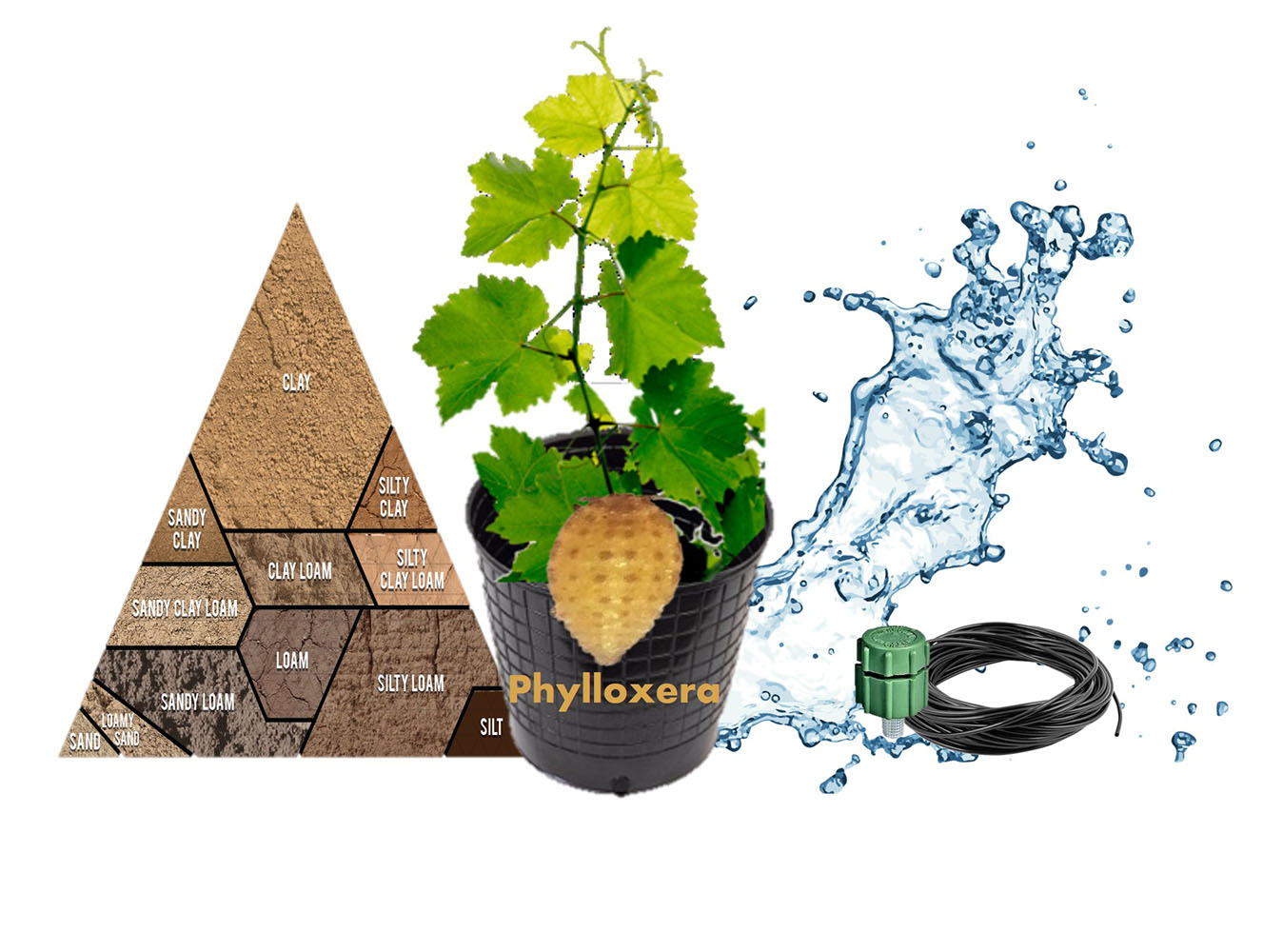Effect of irrigation and soil texture on grape phylloxera (Daktulosphaira vitifoliae Fitch) population and grapevine damage
Palabras clave:
filoxera, Daktulosphaira vitifoliae, riego, textura de suelo, Vitis viniferaResumen

It is believed that phylloxera grows better in clay soils and/or under drip irrigation than in sandy soils and/or flooding. To test these hypotheses, phylloxera damage and population growth were evaluated in potted V. vinifera cv. Malbec under two irrigation methods and soil textures in growth chambers at 16 h of photoperiod and 28ºC + 3ºC. In a first experiment, phylloxera damage and population were analyzed in infested (P) and uninfested (C) plants, drip (D) or flood (F) irrigated. A second experiment consisted in infested (P) and uninfested (C) plants in clay (CL) or sandy (S) soil. D x P reduced leaf number, while P x C increased photosynthesis rate. In the irrigation experiment, P reduced leaf area, shoot length and root dry weight and increased stomatal conductance. Irrigation methods did not influence variables related to root damage or phylloxera population. In the texture experiment CL x C showed a greater leaf area. P also reduced shoot length and root dry weight while CL had a higher number of leaves and less root dry weight. Despite CL developed more phylloxera root symptoms, texture did not affect the number of insects found on roots. Possibly, neither irrigation methods nor soil texture per se are limiting factors for phylloxera performance, but their influence on the vigor of the plants could affect the plant-insect interactions. This is one of the first reports about the influence of soil conditions on phylloxera in a controlled environment and provides a foundation for further studies.
Highlights
-
The effects of two irrigation methods and soil textures were studied on phylloxerated V. vinifera cv. Malbec, in pots, under controlled conditions.
-
Soil texture had no influence on the infestation success of the plants.
-
Irrigation methods did not affect variables related to root damage or phylloxera population.
-
More phylloxera root symptoms were found in plants in clay soil; however, texture did not affect the number of insects.
Descargas

Descargas
Publicado
Cómo citar
Número
Sección
Licencia
Aquellos autores/as que tengan publicaciones con esta revista, aceptan las Políticas Editoriales.










.jpg)




